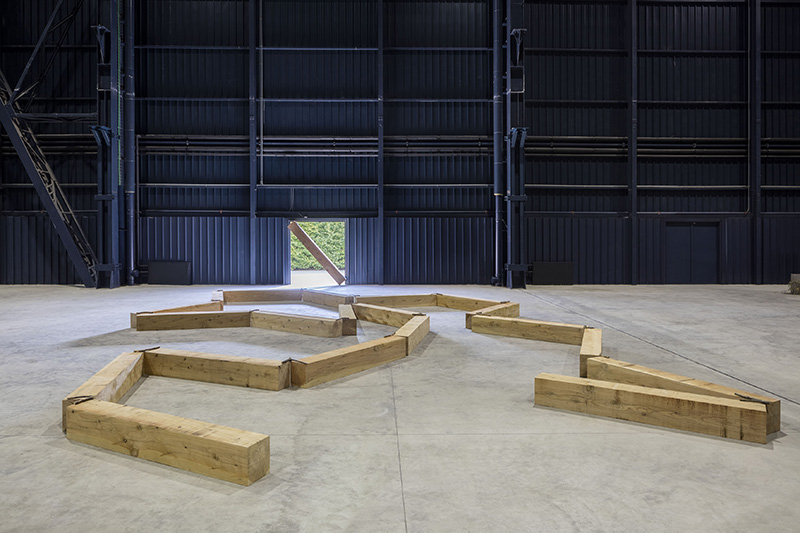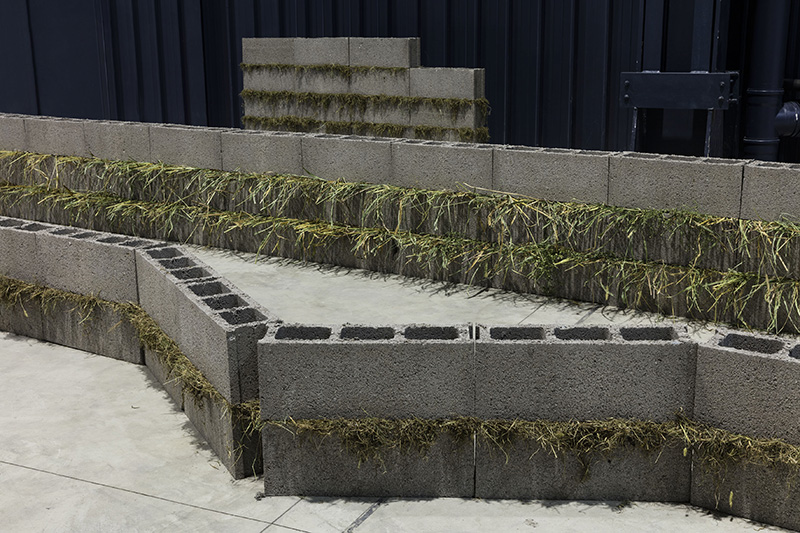ART-PRESENTATION: Kishio Suga
Kishio Suga draws out hidden currents within his subject material and unites them, sometimes in harmony, sometimes in conflict, and opens up a light, free-flowing channel within the space. Via the paraphernalia of everyday, he raises the curtain on a new world and in liberating us from usual habits of thought, gives us a fresh set of eyes.
By Efi Michalarou
Photo: Blum & Poe Gallery Archive
In his solo exhibition at Blum & Poe Gallery in Los Angeles Kishio Suga continues the decades-long evolution of his installations, re-making several major works from the ‘70s to the ‘90s. Such works include “Units of Dependency” (1974), a layered, barrier-like structure of open-core cinder blocks and protruding grass. Furthermore, this is the first exhibition outside of Japan to present an extensive overview of his early works on paper. During the mid-70s, Suga made several series of minimal geometric collages, alternately creating linear forms with tape while tearing, folding, and marking the paper. As with his installations, in his works on paper he constructs a set of relationships only to deconstruct them.. Also Suga made paper works on a similar scale to his installations. “Layered Dependence” (1977) is on display for the first time in 40 years. After graduating from the painting department of Tama Art University in Tokyo in 1968 and working as a studio assistant for American artist Sam Francis, Kishio Suga began making and showing his work at a time of great artistic ferment in Japan. The years between 1969 and 1972 witnessed the emergence and growth of Mono-ha, a movement that also included: Kōji Enokura, Noriyuki Haraguchi, Shingo Honda, Susumu Koshimizu, Lee Ufan, Katsushiko Narita, Nobuo Sekine, Noburu Takayama, and Katsuro Yoshida. Although the term Mono-ha literally translates as “School of Things,” the artists were neither an organized group, nor were their individual practices exclusively focused on things or objects. Their diverse work was united by the choice to use simple materials (both natural and industrially manufactured) as a means to explore the relationships between the individual, matter and surrounding space. Their works were often the result of direct, interactive actions, such as suspending, dropping, breaking and stacking. Mono-ha is therefore centered on both the material properties and the performative dimension of the artwork. These thematic and formal aspects can be seen as having a resonance with the Italian movement of Arte Povera. A connection to Italy also emerges from the many exhibitions on Mono-ha held in this country. Over several decades, works from the movement have been featured at various Italian institutions. In 1978, Suga was chosen to represent his Country at the Venice Biennale, introducing the West to an artistic language in which the investigation of materials and space is rooted in a deep affinity to nature and the environment.
Info: Blum & Poe Gallery, 2727 S. La Cienega Boulevard, Los Angeles, Duration: 25/2-22/4/17, Days & Hours: Tue-Sat 10:00-18:00, www.blumandpoe.com


